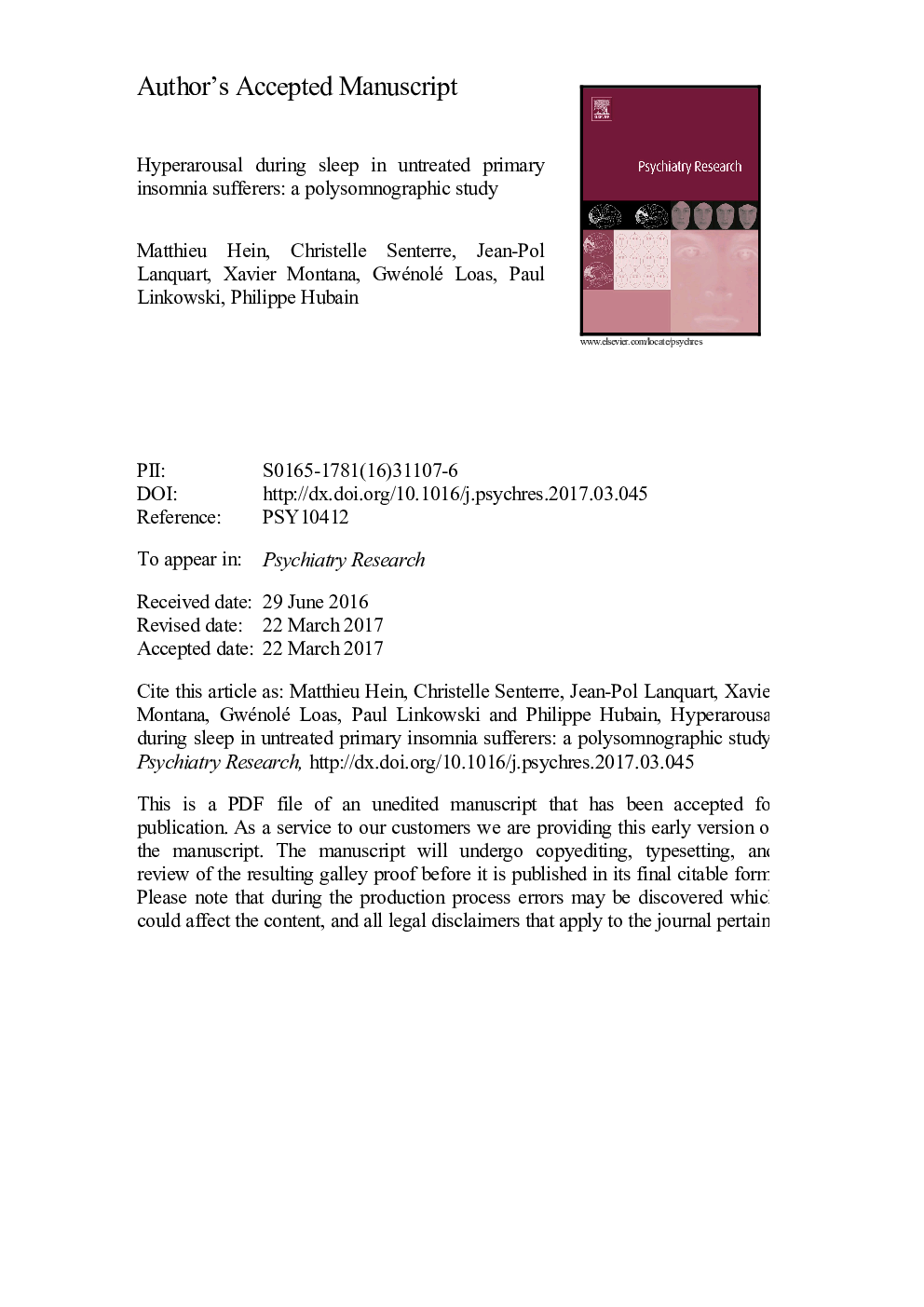| Article ID | Journal | Published Year | Pages | File Type |
|---|---|---|---|---|
| 4933281 | Psychiatry Research | 2017 | 35 Pages |
Abstract
Because some evidence favors the hyperarousal model of insomnia, we sought to learn more about the dynamics of this phenomenon during sleep. Polysomnographic data from 30 normative subjects and 86 untreated primary insomnia sufferers recruited from the database of the sleep laboratory were studied for whole nights and in terms of thirds of the night. Untreated primary insomnia sufferers had an increased sleep latency and excess of WASO, together with a deficit in REM and NREM sleep during the entire night. In terms of thirds of the night, they presented a major excess of WASO during the first and last thirds of the night but an excess of lesser importance during the middle third. A deficit in SWS was found during the first third of the night, but for REM, the deficit was present during both the first and last thirds. Primary insomnia sufferers had no SWS or REM deficit during the second third of the night. We found that the hyperarousal phenomenon occurs mainly during the sleep-onset period of the first and last thirds of the night and is less important during the middle third. These results open new avenues for understanding the pathophysiology of primary insomnia.
Keywords
ACTHSPTREMDSM IV-TRTSTBDISWSSOPISIgamma-aminobutyric acidSleep efficiencyPrimary insomniaWake after sleep onsetHyperarousalSleep latencyrapid eye movementslow-wave sleepsleep period timetotal sleep timeInsomnia severity indexHPAadrenocorticotropic hormonehypothalamic-pituitary-adrenalWASOPathophysiologyBeck Depression InventoryPolysomnographyGABA
Related Topics
Life Sciences
Neuroscience
Biological Psychiatry
Authors
Matthieu Hein, Christelle Senterre, Jean-Pol Lanquart, Xavier Montana, Gwénolé Loas, Paul Linkowski, Philippe Hubain,
